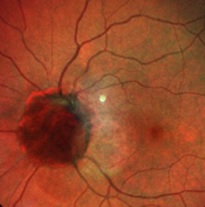Imaging techniques for ocular neoplasia
Medical hypothesis, discovery & innovation in optometry,
Vol. 3 No. 3 (2022),
30 December 2022
,
Page 86-95
https://doi.org/10.51329/mehdioptometry156
Abstract
Background: Novel ocular imaging modalities have greatly impacted the diagnosis and management of different types of ocular neoplasia. In this narrative review, we summarize the practical features of popular and novel imaging modalities for ocular tumors.Methods: Four databases, including PubMed/MEDLINE, Web of Science, Scopus, and Google Scholar, were searched from January 1, 2000 to August 31, 2022. Articles reporting different imaging modalities for diagnosing or monitoring treatment responses of ocular tumors were extracted using various combinations of the following keywords: ocular neoplasia, positron emission tomography or PET, single-photon emission computed tomography or SPECT, optical coherence tomography or OCT, OCT angiography or OCTA, computed tomography or CT, ultrasonography or US, ultrasound biomicroscopy or UBM, and magnetic resonance imaging or MRI.
Results: Various ocular imaging modalities had different accuracies as adjunctive tools for detecting or managing ocular tumors. Anterior ultra-high-resolution optical coherence tomography (OCT) could be used to evaluate images with < 5-µm resolution. OCT angiography provided deeper insight into retinal vascular changes associated with the malignant transformation of choroidal melanoma. OCT in children altered the diagnosis of suspicious retinoblastoma in 3% of the cases and treatment plan in 11% of the cases. While positron-emission tomography (PET)/computed tomography (CT) allowed the detection of metastatic lesions of choroidal melanoma by full-body scanning, single-photon emission CT was more sensitive compared to PET in detecting choroidal melanoma. Ultrasound biomicroscopy, with an accuracy exceeding 92.5%, could detect retinal calcification in lesions measuring 2–3 mm. Magnetic resonance imaging (MRI) had better contrast compared to ultrasound biomicroscopy and higher sensitivity compared to CT in detecting post-laminar optic nerve invasion. However, MRI had a lower spatial resolution compared to OCT. Further development of imaging modalities and their application in drug development would improve the treatment of ocular tumors.
Conclusions: Although diagnosing ocular tumors depend on clinical characteristics, innovations in ocular imaging have enabled early diagnosis and timely, appropriate management of ocular neoplasia, which are conducive to favorable visual outcomes and increased life expectancy. Further systematic reviews and meta-analyses of primary studies focusing on a specific imaging modality in ocular neoplasia could precisely determine the diagnostic accuracy of each imaging modality to better guide eye practitioners with efficient diagnostic or therapeutic approaches for these sight- or life-threatening entities. Imaging modalities may play a major role in drug development in the future.
Keywords:
- neoplasia
- eye neoplasm
- positron emission tomography
- PET scan
- SPECT CT
- CT SPECT scan
- optical coherence tomography
- ultrasonographic imaging
- magnetic resonance images

- Abstract Viewed: 0 times
- Full Text PDF Downloaded: 0 times